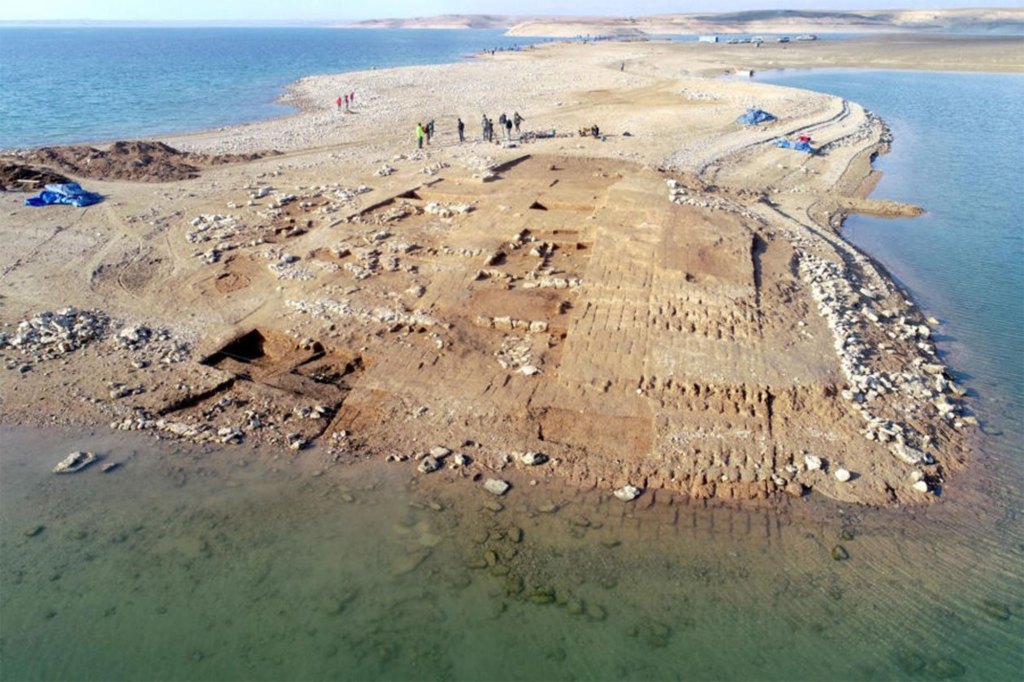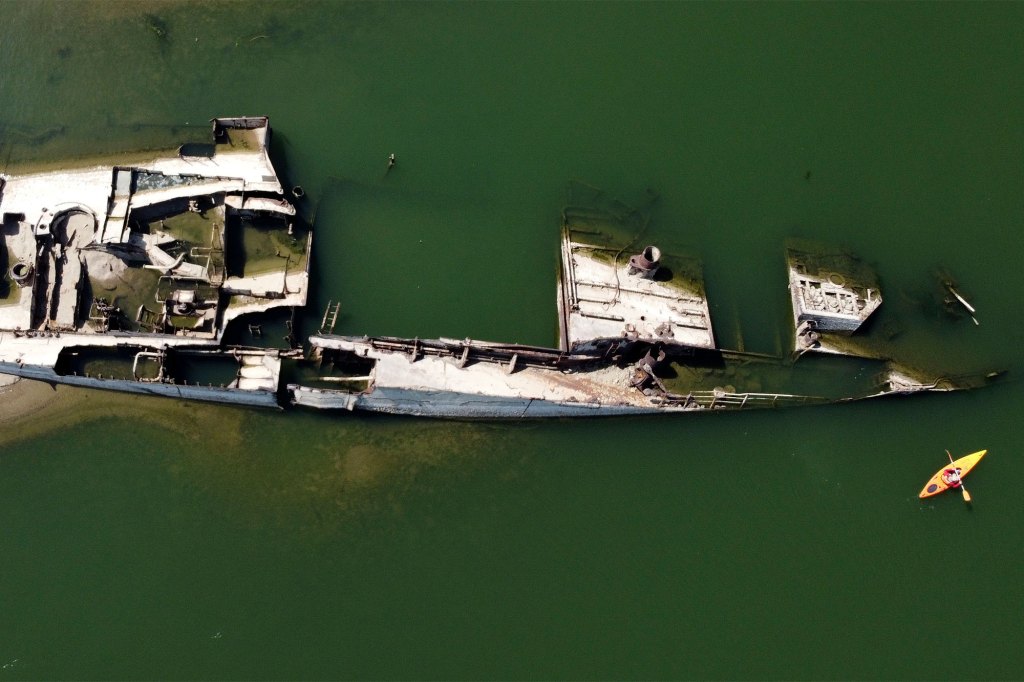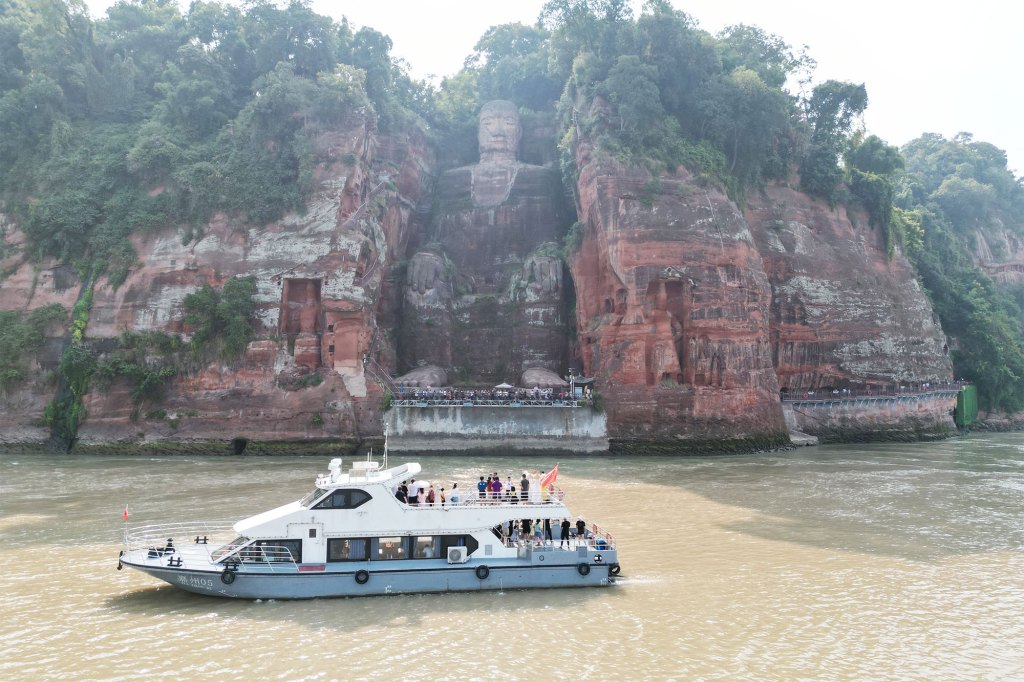Drought exposes lost cities, ancient treasures and foreboding signs
As drought and record heat span the globe, bodies of water have evaporated and history has appeared. Dozens of ancient cities, sunken treasures and grim reminders have revealed themselves for the first time in years and, in some cases, decades.
Hunger stones in Czech Republic and Germany
“If you see me, weep,” reads a carving in a stone at the bottom of the Elbe River in the Czech Republic.
The inscriptions on the so-called hunger stones date back as far as 1616 and memorialize famine years. Drought dropped the river levels and exposed the stones, allowing townspeople more than 400 years ago to write about lost harvests due to lack of rain.
Drought uncovered similar stones in Germany when the Rhine River dropped this summer. Some of the German stones are as recent as the 1940s.
‘Spanish Stonehenge’
A shrinking reservoir exposed an oval of stones that scientists believe date back to 5000 B.C. It is called the Dolmen of Guadaperal. An archeologist discovered it in 1929, but the government later built a dam on the Tagus River and the stones were left sitting on the bottom of the Valdecanas Reservoir, according to an article in the journal Science.
The 100-or-so stones, some standing 6 feet tall, are arranged in an oval, reminiscent of the layout of England’s famed Stonehenge. So, the formation in Spain has been dubbed “Spanish Stonehenge.”
The last time the megaliths saw the sun was in 2018, and the Doleman have surfaced only a handful of times since going underwater. Archeologists are busy researching the stones before the water levels rise again.
Lost city found in Iraq
Archeologists also scrambled to excavate and document a 3,400-year-old city in Northern Iraq on the Tigris River. Extreme drought forced the country to draw down the Mosul Reservoir to water crops, revealing the ancient city. In a press release, scientists called the reservoir Iraq’s most important water storage.
The German and Kurdish archeologists in charge of the project think this could be Zakhiku, a center of the Mittani Empire that ruled large parts of northern Mesopotamia and Syria between 1550 and 1350 B.C. They found a palace, massive fortification walls and towers. They also located multi-storied storage buildings filled with pottery and tablets.

“It is close to a miracle that cuneiform tablets made of unfired clay survived so many decades underwater,” Peter Pfälzner, an archeologist with the University of Tubingen said about the discovery.
The well-preserved condition of the walls shocked the research team considering the walls are made of sun-dried mud bricks and were under water for more than 40 years, stated the press release from the University of Tubingen.
The team covered the site in plastic sheeting and gravel fill to protect it from the water. Recent rains have submerged the ancient treasure.
World War II bomb in Italy
A fisherman on the growing banks of the River Po made a startling discovery – a 992-pound World War II era bomb. The local government evacuated 3,000 people before the bomb squad was able to move and detonate the American-made bomb in an 18-foot hole in a nearby quarry, reported the Italian news organization Corriere Della Sera.
World War II shipwrecks in Serbia
Bomb squads were also busy in Serbia, where low levels on the Danube River revealed dozens of German warships, complete with ammunition and explosives, FOX News reported. Germany scuttled hundreds of the ships as Soviet forces pursued retreating Nazi forces during World War II.

Officials worried that the explosives pose a threat to shipping lanes.
Drought rediscovers WWII warships
Extremely low water levels due to drought on the Danube River, uncovered World War II warships on the sandy bottom.
600-year-old Buddha statues in China
Three 600-year–old Buddha statues surprised a swimmer on the Yangtze River in China. The trio is on an island that is usually submerged by river water.
“Because the temperatures are so hot, the lakes and rivers are drying up and look what they found,” FOX Weather meteorologist Amy Freeze said.
The man who discovered the statues lost his shoes while swimming but was so amazed that he took the 113-degree rocks in bare feet to explore the ancient monuments. Take a look at drone video taken of the find attached to the top of this article.
The giant Buddha below also grew out of drought and made an appearance in its entirety in Leshan, China.
Due to the continuous drought, the river flow of the Dadu River, Qingyi River, and Minhe River has diminished significantly in Leshan. The giant Buddha has completely emerged from the water.
Dinosaur tracks in Texas

Park visitors in one part of Texas got to walk in 113-million-year-old footprints. The ongoing drought dried up part of a river at Dinosaur Valley State Park, exposing the massive footprints of a 7-ton acrocanthosaurus and a 60-foot tall sauropoeidon.
Record Texas rainfall last week might have filled them in again with the water and sediment that usually keeps them hidden from view.
Dinosaur tracks uncovered in Texas amid drought
Amid a drought, the Dinosaur Valley State Park has discovered dinosaur footprints that have been historically covered by water and sediment. They date back more than 113 million years ago.
Have water levels been this low before?
Climatologists claim in a recent study published in the journal Nature that the western U.S. is experiencing the driest 22-year stretch in over 1,200 years.
China just went through its most intense heat wave since recordkeeping began in 1961, according to the World Meteorological Organization. In July alone, China’s economy lost 2.73 billion yuan due to drought, according to China’s Ministry of Emergency Management.

A recent report by the European Drought Observatory and the European Union’s Joint Research Center said this is the worst European drought in over 500 years. Nearly 50% of the E.U. is under a drought warning, with another 17% on alert.
This is also the worst drought in France’s history, according to the report. Portugal and Spain are rationing water, and countries such as Germany, France, Italy, Romania and the U.K. issued water restrictions.
According to the report, low water levels are reducing power production in several countries.
Read the full article Here


